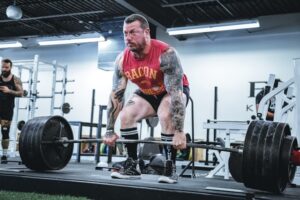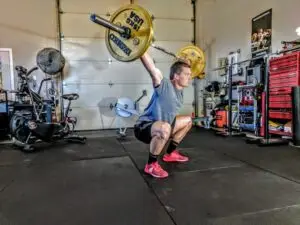As a strength and conditioning coach who lives what he teaches, I remember my own early days all too well. Picture this: You’re going to the gym, training hard, constantly learning, trying new things to “shock the muscles”, but not much closer to your goals. I wish someone had pulled me aside back then and explained how exercise programs aren’t one-size-fits-all. They’re like custom recipes, tailored to what you want or need. Whether it’s building muscle, boosting strength, or sparking some explosiveness in your step. In this post, I’ll share the key lessons I learned the hard way, backed by evidence, to help you design smarter programs from day one. Get it wrong and your progress will plateau. Let’s dive in and make your fitness journey more efficient and enjoyable.
The Power of Specificity: Training Methods Match Your Goals
One of the biggest eye-openers for me was realizing how specific exercise training must be to your objectives. There’s overlap, sure, but ignoring this can stall your progress. In fact, some training methods are counter-productive to other goals. Take muscle gain, or hypertrophy, as an example. The star player here is mechanical tension by stressing your muscles enough to trigger growth. You can achieve this with heavy weights as low as the 4-8 rep range or lighter ones pushing up to the 30-50 reps, as long as each set gets you close to failure. A review in the Journal of Sports supports this wide rep spectrum for hypertrophy,1 showing similar muscle growth across loads when effort is high. It’s great news for anyone who only cares about muscle growth. Being able to train at a variety of methods allows for variation, customization, and working through muscle tweaks.

But what if we switch gears to pure strength training? Here, the rules change dramatically. If your aim is to lift heavier overall, like deadlifting triple your bodyweight, sticking to reps over 15 likely won’t cut it. You might gain a ton of muscle with this method, but it’s unlikely your bodyweight to strength ratio would improve much. You’ll pick up some strength from added muscle mass and improving technique, but the real gains are neural, not just about bulking muscle. Think of it as skill-building: Your nervous system learns to fire muscles more efficiently, recruiting more fibers at once. Studies on neural adaptations confirm this, noting early strength boosts come from better motor unit synchronization rather than size alone.2 That’s why powerlifters often outlift bodybuilders even when they weigh less; they’ve honed that neural edge through low-rep, high-load sets (1-5 reps) with ample recovery. Sometimes up to 20 minutes between efforts for the elite. Impractical for those with packed schedules? Absolutely. But even 3-5 minutes of rest mimic much of the benefits, turning your sessions into focused, intense bursts.
Then there’s explosiveness, where strength and muscle falls short. Sprinters embody this: They generate peak forces up to five times their body weight per step, yet with ground contact times around 0.1 seconds, or 100ms. This is faster than your average reaction time of 250 milliseconds (test yours at

humanbenchmark.com for fun). Maximal strength is considered “low-speed” strength while explosiveness demands “high-speed” strength, blending force with velocity. Training this means bursts of 1-5 repetitions of power cleans or medicine ball throws, not just max squats or your typical High Intensity Station class. It’s why a strong-but-slow lifter might lag in sports requiring quick bursts, even if they are objectively stronger.
Flexibility Isn’t Just Stretching! Strengthen Through Full Range

I used to think flexibility meant hours of static stretches, but boy, was I wrong. You can build it right into your strength routine by training through a full range of motion (ROM).3 Squat deep, overhead press behind your neck, incline bicep curl and over time, you’re not just stronger but more mobile in those extended positions. Be aware that doing these stretched positions means you will have to reduce your weight, sometimes by half. Research shows resistance training with full ROM improves joint range as effectively as stretching. It’s a two-for-one: Enhanced flexibility plus functional strength, perfect for busy professionals avoiding extra yoga sessions or are confined to a chair all day. Static stretching boosts ROM too, but it doesn’t add strength gains. My personal favorite is to finish my workout with a weighted stretch for 1-3 sets at the end of my workout. It takes 5 minutes, not 30+.
Tendon Talk: Balancing Stiffness and Elasticity for Performance
Diving deeper, tendons play a sneaky role I overlooked early on. For explosive athletes, you need a balance of stiffness (for efficient force transfer) and elasticity (for that springy rebound). Heavy loads build stiffness, aiding stability, but they can slow you down if overdone or unbalanced. Enter plyometrics which are high-intensity bounces like depth jumps that enhance elasticity via the stretch-shortening cycle, where muscles quickly lengthen then contract. But don’t confuse plyometrics with all explosive work; a box jump without a drop relies more on rate of force development, skipping the full stretch reflex, adding more detail to the nuances of strength training.
I could go on. Endurance training deserves its own post, eccentric strength and eccentric explosiveness could use it’s own post, even isometric training, but these insights developed over a decade of study and practice transformed how I program for clients. Exercise that is straightforward with one goal, like having massive arms or maxing a bench press is relatively simple. Broader aims, like all-around athleticism, feeling healthy while being strong, or varied fitness, add layers of complexity. The more advanced an athlete, the more complex the training is required to be to continue to advance in athleticism.
Ready to craft your ideal program? Book a free consultation to personalize this for your schedule. Subscribe for weekly tips to keep the momentum going—your future self will thank you.
Disclaimer: This is my professional opinion based on current evidence and should not replace personalized medical advice. Consult a healthcare professional before making changes to your exercise routine.
- Loading Recommendations for Muscle Strength, Hypertrophy, and Local Endurance: A Re-Examination of the Repetition Continuum
- The increase in muscle force after 4 weeks of strength training is mediated by adaptations in motor unit recruitment and rate coding
- Strength Training versus Stretching for Improving Range of Motion: A Systematic Review and Meta-Analysis

